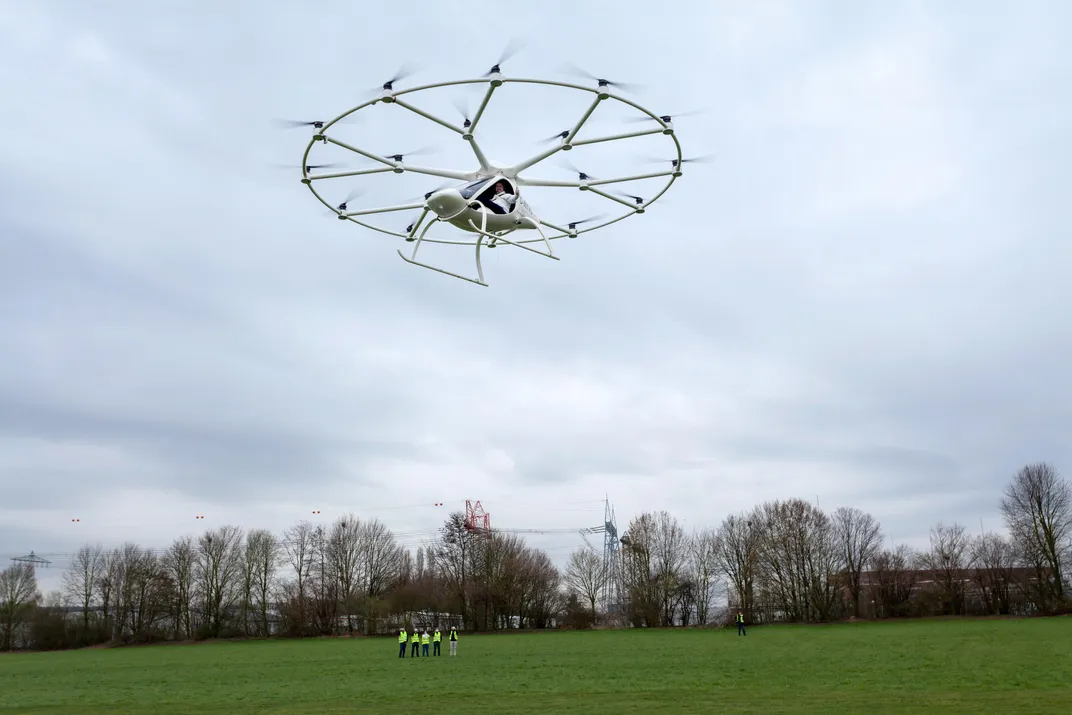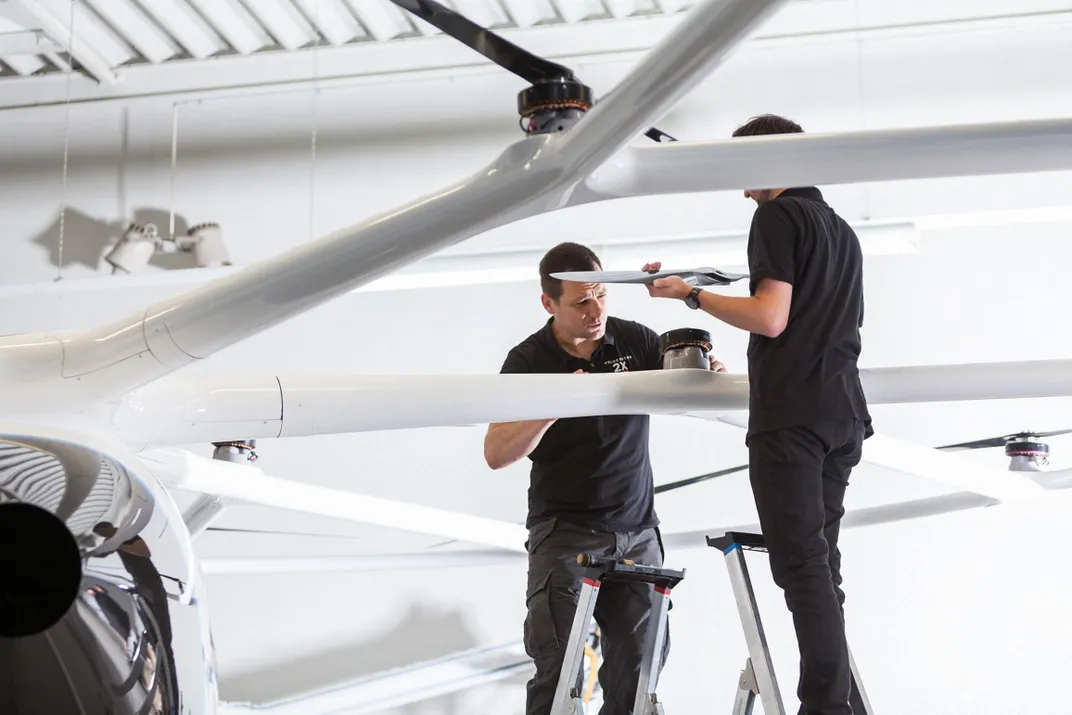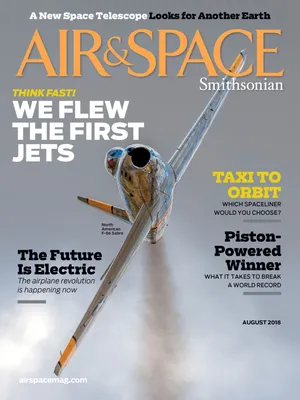Is Green Aviation Really Coming?
Noiseless, low-emission flight may be here sooner than you think.
/https://tf-cmsv2-smithsonianmag-media.s3.amazonaws.com/filer/ab/24/ab241f76-c8f1-4817-9533-794b4ab08289/05b_aug2018_verseattle_live.jpg)
It took more than 100 iterations for Israeli physicist Omer Bar-Yohay to declare his company’s V-tailed swan of an electric jet ready for the world to see. When his company, Eviation, premiered its drone, the Orca, at the 2017 Paris Air Show, it was a literal glimpse of the shape of things to come. While Eviation intends to market the remote-piloted Orca, it is also using the drone as a one-third-scale demonstrator for the Alice—the nine-passenger crewed electric commuter airplane the Tel Aviv-based firm says will fly next year.
One cent per seat per mile in direct operating costs is the promise Eviation is making with the Alice, designed to soar above cityscapes at 10,000 feet. As with its drone sibling, the Alice sports electric wingtip and tail-fin propeller housings shaped like little bombs. They are attached to a carbon-fiber airframe so light that the aircraft’s batteries account for 60 percent of its total takeoff weight.
Bar-Yohay, 39, believes the Alice is the regional jet of the future. Designing it meant rethinking everything.
“People ask me why aren’t we using existing aircraft designs—for example, the Piaggio Avanti,” Bar-Yohay says, referring to a popular Italian corporate twin turbojet that is easily recognized by the canard, or short fin-like front wing, that makes it look like a hammerhead shark. “It’s a great design and I really love it,” he says. “But the airframe is built to hold up big shaky aircraft engines.”
An electric aircraft needs less structure. “With electric propulsion you have relatively small motors,” Bar-Yohay explains, “and this means you can place them in very different locations” than powerplants on a conventional airplane, including wingtips and tail. Using lithium-ion batteries, their power distributed according to a proprietary algorithm, this zero-emission airplane will be able to take off from and land on short runways, like those on the thousands of small, regional airports across the United States.
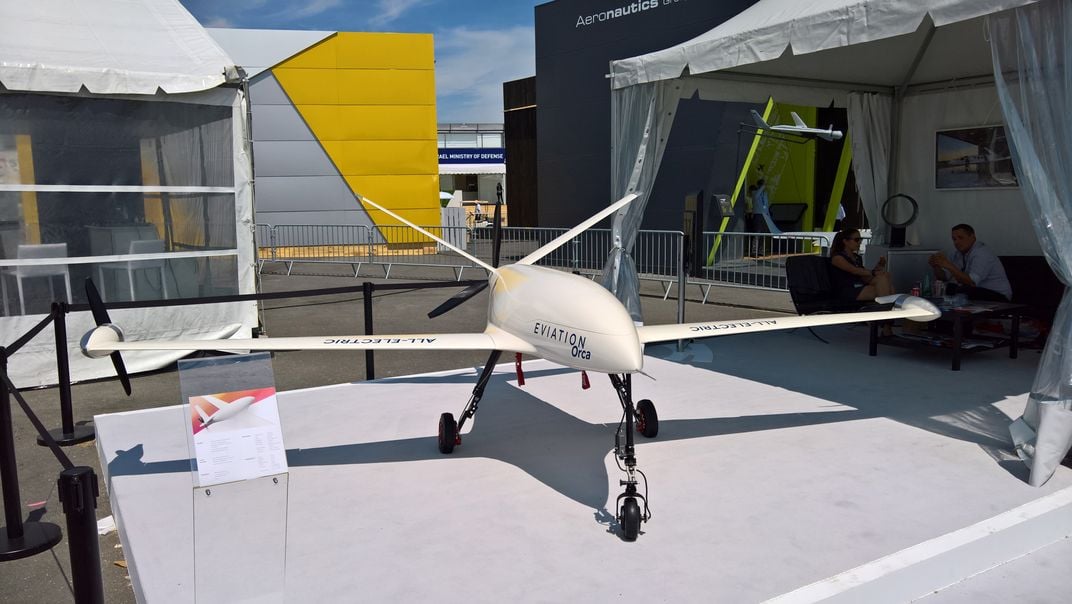
The Alice is designed to travel up to 650 miles on a single charge at speeds of about 275 miles per hour. Bar-Yohay claims that operators will be able to charge passengers 30 to 60 percent of what they must charge today to operate profitably. If he can sell the Alice for $2.5 million to $3 million per aircraft, he estimates that carriers would need less than four years to recoup their investment through savings on fuel and maintenance costs.
Is he dreaming? Maybe not. After winning acclaim last October at a Wall Street Journal-branded global technology conference in Laguna Beach, California, Eviation received what Bar-Yohay calls “a tsunami of interest and investment.” He expects the full-size Alice to be test-flown—with a pilot onboard—in 2019.
The advent of lighter and more powerful batteries has drawn a number of entrepreneurs into the electric airplane race. Don Hillebrand, the director of Argonne National Laboratory’s Center for Transportation Research, likens the current stage of aircraft electrification to the use of the China Clipper and the other large flying boats built for trans-Pacific flights in the mid-1930s. The internal combustion engine had not matured to a point where it could reliably carry large aircraft that distance without refueling, but there was a consensus that it would. So Pan Am built airstrips and even modest hotels on remote Pacific islands to allow for refueling stops even as the world prepared for the changes that increased trans-Pacific travel and commerce would bring.
Batteries are still not yet good enough to lift heavy airplanes to cruising altitude and keep them there. But designers have seen enough progress to believe they will be. “You can almost look at it like the law of incremental improvement,” Hillebrand says. “When you continually have a compounded improvement like they’re seeing in energy storage technologies, then you really start to think far ahead.” And aviation, he points out, is a long game. “Designing a propulsion system 20 years in advance is not crazy, when you look at the complexity of some of the aircraft that are produced now. So now is the time to start planning,” he says.
With smaller aircraft, change is coming much faster.
In 2011, the Taurus G4, made by the Slovenian light aircraft manufacturer Pipistrel, became the world’s first electric four-seater to fly. Tine Tomažic, Pipistrel’s director of research and development, says his firm’s progress in the years since justifies the new optimism. Battery life for the Taurus G4 has grown from 25 minutes to 150 minutes, and cruise speeds from 58 miles per hour to 127. And while the G4 once required six minutes of recharging for every minute of flight time, by 2016 Pipistrel’s engineers had reduced the ratio of recharge time to flight time below 1:1. That same year, Pipistrel’s HY4 aircraft had its first flight. It’s the world’s first four-seat aircraft to be powered by hydrogen fuel cells alone. The HY4 can remain aloft for up to 10 hours, emission-free.
“Batteries have improved tremendously in costs and capabilities, electric motors have progressed, and power densities are rivaling gas turbines,” says Matt Knapp, founder and aero chief engineer of Zunum Aero. Founded in the Seattle area in 2013, the company intends to begin deliveries of its nine-to-12-seat gas-electric hybrid commuter jet aircraft, the ZA10, in the early 2020s. The charter airline JetSuite is Zunum’s first customer, having announced plans to buy up to 100 of Zunum’s new airplane.
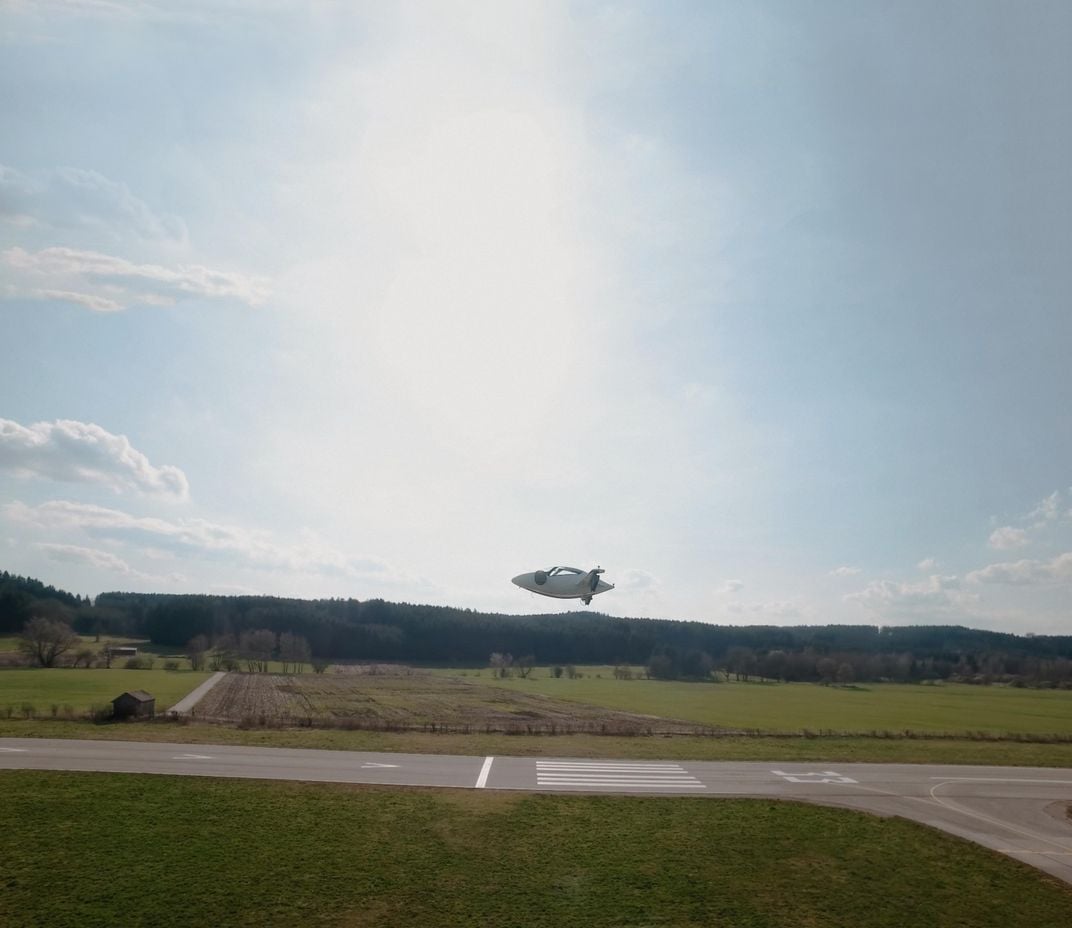
Both Zunum and Eviation say their electric aircraft will take advantage of underused public airports. They believe that if they can spare passengers the burden of connecting through hubs to reach smaller cities, customers will show up.
In March 2017, Zunum secured investment from two big players: Boeing HorizonX and JetBlue Technology Ventures. Both companies are betting that electric or hybrid electric jets are the key to more profitable regional and intercity flight.
“Today’s regional jet-size aircraft are not cost-efficient,” says Bonny Simi, president of JetBlue Technology Ventures. (She flies a regional jet herself, the 100-seat, 515-mph Embraer 190.) She maintains that for electric fixed-wing aircraft with 10 to 50 seats, the current market “sweet spot” is 300 to 1,000 miles. Operators measure their costs by available seat mile (ASM), or the cost to carry one seat one mile.
“Jet aircraft are more efficient the longer and higher they fly” and the more seats they carry, Simi explains. On long trips, big jets with seat numbers in the triple digits have an operating cost of $0.08 to $0.12 per ASM. For short trips, jets are more costly because more fuel is burned during takeoff and climb, and fixed costs are shared over fewer miles. Some carriers now use turboprop aircraft for shorter flights, which have an ASM of $0.15 to $0.20. But down into the 10-seat range, ASM spikes above $0.40.
“The cost for battery power is much less than the cost of fuel, and there is less maintenance,” Simi says. “Forecasts for electric aircraft [flying] 300 to 700 miles estimate 10 to 12 cents,” a fraction of the cost for airplanes with fewer than 50 seats.
JetBlue Technology Ventures has focused on small electric airplanes because they believe there’s a limit to how good batteries will get in the near term. “Battery powered airplanes will max out at 50 seats and 1,500 miles,” Simi predicts. “We don’t see anything bigger or longer for the next 50 years.”
Vertical Integration
Vertical takeoff and landing is the hottest area of development in the pursuit of small, electric aircraft. Lilium of Munich, for example, has already tested a fully electric VTOL mini-jet—a remote-piloted, two-seat white pod that launches from a landing pad but flies like a conventional airplane. It can cruise at 187 mph and fly for one hour on a battery charge.
The German company promises quiet, zero-emission air taxis for up to five passengers, summoned on demand via a phone app. “We believe in a world in which everyone can fly anywhere, anytime,” says Lilium co-founder and CEO Daniel Wiegand in a slick marketing video created to promote the venture.
So far his pitch is working: Lilium has raised $100 million from billionaire investors like Skype co-founder Niklas Zennström, Chinese tech giant Tencent, and Obvious Ventures’ Ev Williams, who also co-founded Twitter and served as its CEO until 2010.
But Lilium isn’t even the only German company in this sphere. Volocopter has demonstrated an 18-rotor all-electric drone, the Volocopter 2X. (Intel CEO Brian Krzanich was its first passenger, in December 2017.) The vehicle uses proprietary software to adjust the speeds of 18 separate electric propulsors many times per second.
Others will come. According to BIS Research, the worldwide market for fixed-wing VTOLs reached nearly $2 billion in 2016. Those numbers will hit $5.3 billion by 2026, thanks to both civilian demand and a military need for high-speed VTOLs.
One of those military specimens was the Defense Advanced Research Projects Agency’s LightningStrike XV-24A. The aircraft, which was cancelled in April, was a hybrid electric uncrewed VTOL with a three-megawatt turboshaft engine powering 24 ducted fans, nine integrated into each wing and three inside each canard. Both the wings and the canards rotated to direct fan thrust aft for forward flight or downward for hovering. Announcing the cancellation, a DARPA spokesperson said the XV-24A had achieved its major design objectives as a subscale demonstrator. No private-sector transition partner for the VTOL has yet been named.
The civilian sphere, meanwhile, is heavily invested in Short Take-Off and Landing aircraft. Faradair Aerospace Limited, a U.K.-based aviation design firm, is developing a six- to eight-seat, boxed-wing “bioelectric hybrid aircraft”—founder Neil Cloughley calls it BEHA. Intended as a more readily achievable alternative to fully electric flight, BEHA uses batteries just for takeoffs and landings and as a safety backup to an internal combustion engine that burns Jet A or biofuel at cruising speed.
Cloughley is keeping his promises modest: A minimum 10 minutes of electric flight from the prototype he expects to have ready in 2020 or 2021. The BEHA has a shrouded-duct propeller in the rear to capture sound. Cloughley believes the design will eventually be “faster than a helicopter” and cheaper to buy and to operate.
He hasn’t yet made that pitch to the public. Faradair is relying on private investment for now, while acknowledging that final certifications under the Federal Aviation Administration and the European Aviation Safety Agency could take “a couple of years.” Which will still bring it to fruition faster than any electric-only aircraft, in his view. “If anyone thinks they’re honestly going to build a [large] electric aircraft and get it certified in 10 years, they’re mad,” he says.
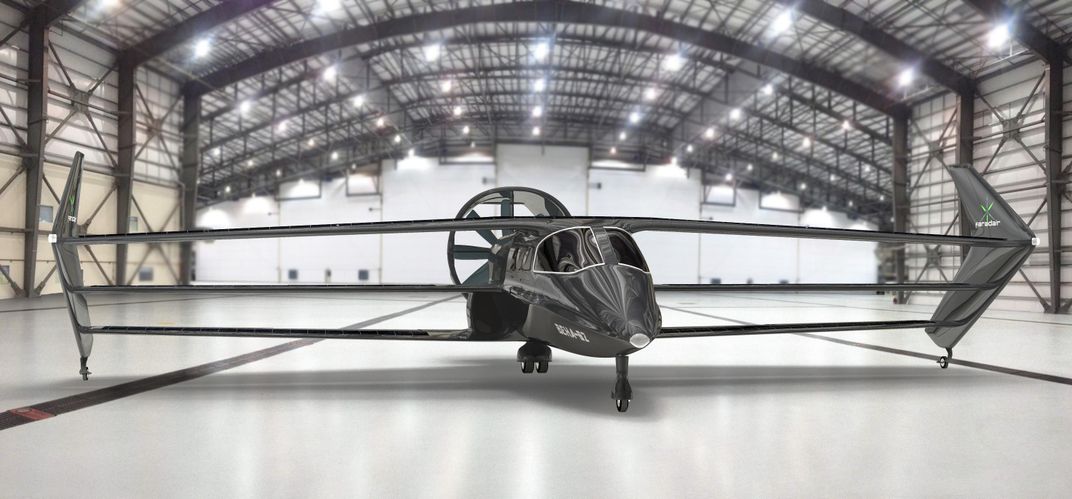
Cloughley is taking a shot at the British discount airline easyJet there. In April 2017 easyJet made a splashy announcement with Wright Electric, a U.S. start-up, pledging to build a fully electric aircraft capable of carrying at least 120 passengers within a decade.
Gary Smith, easyJet’s head of engineering, says that only major emissions reductions and cost savings can make the economics of short-haul flights make sense. “We need a robust, reliable aircraft that can perform with turnaround times of 25 minutes,” he says. “If you’re going to eliminate gas turbine engines, the aircraft should be electric and digital.”
The business intelligence firm Thomson-Reuters estimates that if electric jets were proven, the market could reach $22 billion within 15 years. But proving them will require a battery that can rival the power density of fossil fuels.
No one yet knows how to build one.
Juicing Up
The oft-cited magic number at which long-distance battery-powered commercial flight might become viable is 1,000 watt-hours produced per kilogram of battery weight. That’s a long way from existing batteries, which have specific energy in the range of 270 to 300 watt hours per kilogram, says Venkat Viswanathan, a professor of mechanical engineering at Carnegie Mellon University in Pittsburgh. He personally doesn’t buy the 1,000 watt-hours per kilogram minimum; he says that with new techniques in drag reduction, batteries that supply even half that much power would make electric flight “really competitive.” He asserts that a battery producing “only” 400 to 500 watt-hours per kilogram could propel an airplane 200 to 400 miles on a single charge.
Results like that might not be enough to convince skeptics that we should entrust machines as complex and potentially dangerous as aircraft to battery power at all. But even inventing a battery powerful enough to carry that much energy wouldn’t solve the problem of how to generate enough power to charge it.
Alan Epstein, vice president of technology and environment at Pratt & Whitney, says that an aircraft the size of an Airbus A380 running purely on batteries would require charging for “half an hour using most of Connecticut’s available electric power.” He sees no compelling argument for trying to build electric versions of such massive, power-hungry machines when “conventional planes just keep getting better.” (It must be said that no manufacturer has announced plans to attempt an electric or hybrid-powered aircraft the size of the A380, the world’s largest airliner.)
Argonne’s Hillebrand disputes that traditional engines will preserve their lead. “Internal combustion aircraft engines continue to improve, but they’re not improving at the rate that battery density and power electronics are improving,” he says. “It’s a bit of a race, and [electrics are] way behind and moving much faster.”
Gregory Bowles, vice president of global innovation and policy at the General Aviation Manufacturers Association, is confident the power generation challenge will be solved. “A person from the late 1800s might make the same claims about replacing gas lamps with light bulbs: that a grid to supply electricity for bulbs doesn’t exist,” he says. He points out that power generation will have to increase whether electric airplanes come or not. “Electricity is so important in the future world, these issues are far greater than aviation,” he says.
One of the benefits of electric power generation is emissions reduction. Airplanes release 500 million tons of carbon dioxide into the atmosphere each year; unless major new restrictions are put in place, that figure is expected to triple by 2050. The International Civil Aviation Organization says the emissions argument for trying to replace combustion engines with hybrid or electrics is comparatively weak because aviation accounts for only two percent of the globe’s total carbon footprint (12 percent of the total carbon emission from all transportation sources). The worst carbon polluters are the electric utilities still operating on coal and natural gas. Electricity generation accounts for 29 percent of greenhouse gas emissions worldwide, while cars, trucks, diesel engines, and trains account for 27 percent.
Aviation may benefit from investments by automakers, who have been pushing the development of lithium-ion batteries. But there’s an ecological cost to that too. Making these batteries involves rare earth mining, which releases toxic aluminum sulfate and sulfuric acids into the environment.
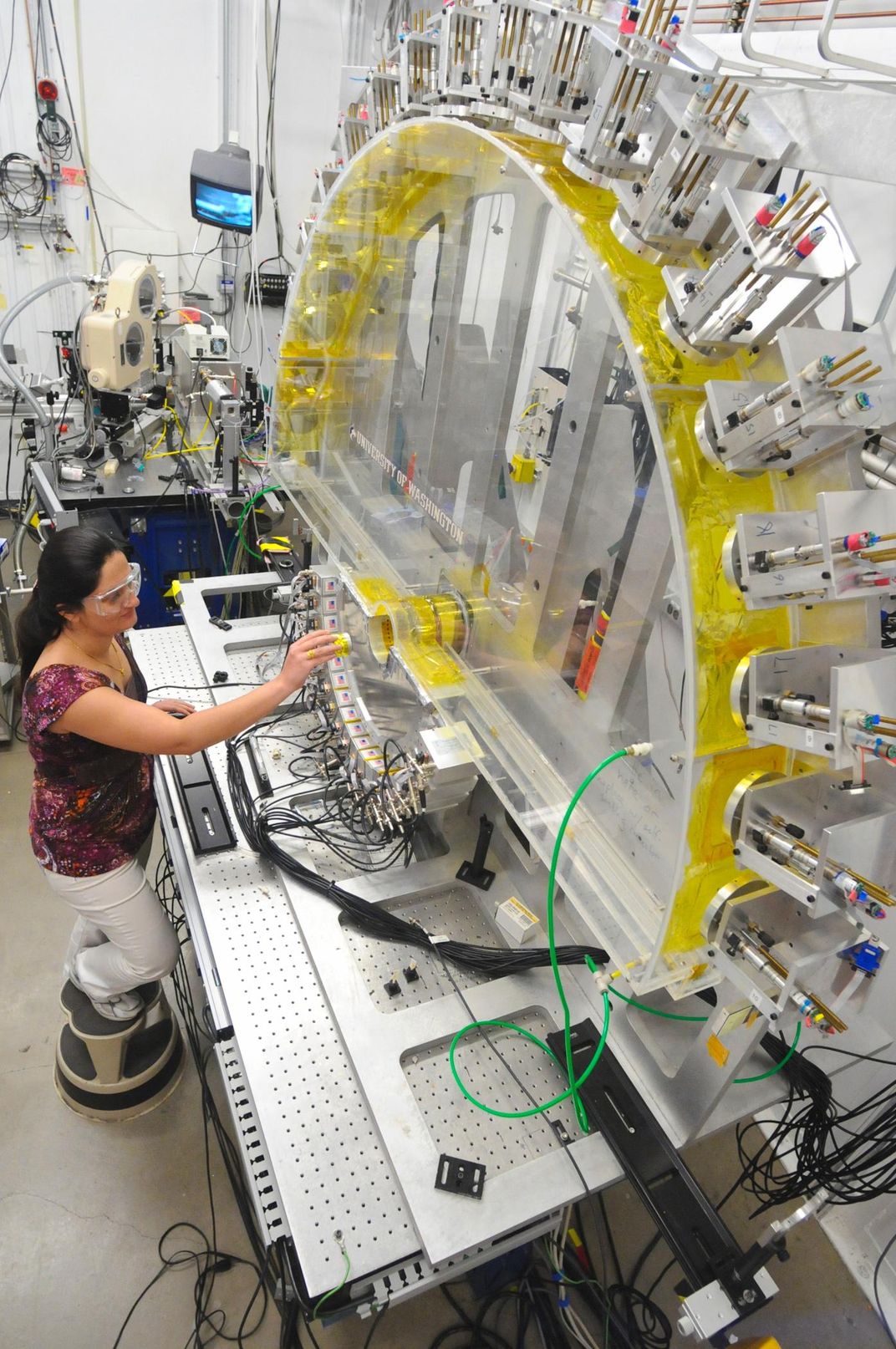
Richard Aboulafia, a vice president with the Teal Group, an aviation market research firm, doesn’t see this market evolving without governmental pressure. In the United States, “there is no regulatory or cost impediment at present related to aircraft emissions,” he says, although Europe is tightening rules with a carbon cap-and-trade program. “Electric will only succeed in a market if it enables aviation to do something it currently can’t do,” he says. He even doubts the strategy of using smaller electric aircraft to revive underutilized public airports. “The airfields are underutilized because they are places that people don’t want to go,” he says. Further, the projected costs to operate the upcoming generation of electrics may not be any cheaper than conventional aircraft incur. He argues that even for intercity flight, electric VTOLs and air taxis will cost passengers about the same as helicopter rides, unless they become ubiquitous. So why not stick with time-tested technology?
Half and Half
Glenn Llewellyn, the general manager for electrification at Airbus, concedes that it all comes down to dollars and cents. But he says Airbus has seen sufficient progress to make investments in hybrid electric flight. It started in 2014 with the flight of the E-Fan, a tiny two-seater powered by two 30-kilowatt electric engines, followed by more powerful electric E-Fan flights across the English Channel. Airbus cancelled its plans to bring the E-Fan to market this year, but Llewellyn says that once Siemens assured its partner it could build a two-megawatt motor “at the right power-to-weight ratio,” Airbus was convinced it should continue development of the E-Fan.
In late 2017, Airbus announced it would partner with Rolls-Royce and Siemens to build a hybrid electric aircraft demonstrator, the E-Fan X hybrid, scheduled to fly by 2020. Developed from a BAe 146 regional airliner, one of the demonstrator’s four gas turbine engines will be replaced by a two-megawatt electric motor powered by batteries. Eventually a second electric motor will be installed.
Llewellyn says that Airbus perceives a pathway for better batteries: hybrids at first, mostly kerosene burning, then gradually introducing electric power as gas turbines get swapped out. Modular design and boundary layer ingestion are important developments too.
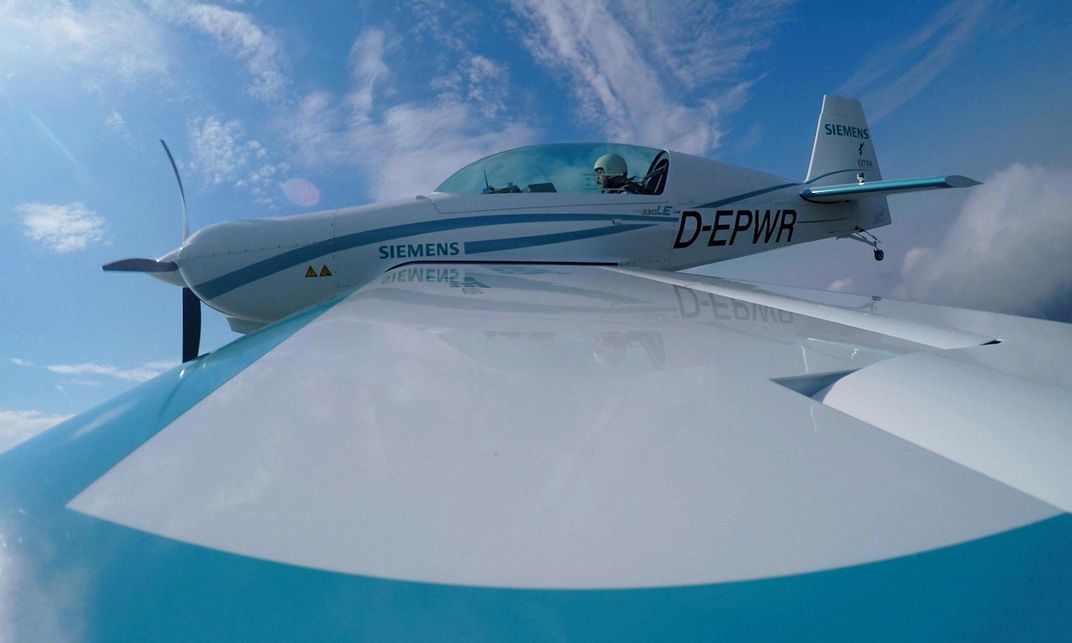
“When you start to separate power generation from thrust generation,” as is possible with electric power, “you have much more flexibility in overall design, including smaller vertical tails,” Llewellyn says. For example, “if we have distributed propulsion mounted on the wings—six or more propellers—these could be used for differential thrust, providing yaw control and therefore eliminating the need for a vertical tail. Distributed propulsion is a lot easier with electric motors because they are lighter weight and lower cost than adding multiple gas turbines along the wing,” he says.
Airbus’s partner, Siemens, experienced a tragic setback on May 31 when another aircraft for which it had built an electric motor, the Magnus eFusion, crashed near Magnus’s headquarters in southern Hungary. Both pilots were killed in the accident, the cause of which is currently under investigation.
In 2008, Boeing began work on an advanced concept hybrid jet, the SUGAR Volt. (SUGAR stands for Subsonic Ultra-Green Aircraft Research.) The goal of the study was to reduce noise, environmental impact, and fuel consumption by 70 percent within 20 years.
The Volt has not been built. But Boeing spokesperson Megan Hilfer says the design process has produced meaningful innovations, like the high-span, truss-braced wing with battery pods mounted beneath it. Its wings fold up on the ground like those of carrier-based aircraft. This Volt’s hybrid powerplant covers long-range flights with conventional fuels and shorter flights primarily with electric power.
Zunum’s ZA10 model is a bit like the Volt: It uses both gas turbine and plug-in electric power to run on less than half the fuel consumed by a conventional turboprop, producing about one-quarter of a turboprop’s noise. Its dual propulsors, in the rear of the aircraft, are ducted fans driven by electric motors, the power coming from a combination of batteries and the gas turbine generator.
The interesting aspect of the Zunum model is how conservative most of it is: Zunum’s Matt Knapp says the major innovations are the hybrid electric powertrain, coupled with an airframe optimized for regional speeds and distances. The cockpit, propellers, and airframe designs and materials are standard; pilots and mechanics will need very little retraining.
If Zunum hits its targets of beginning deliveries in the early 2020s, Knapp says that among the first to benefit will be weary frequent fliers who’ll get to begin to travel from underused public airports. “As just one example, Moses Lake in Washington state has gained and lost air service several times in the past decades,” Knapp says. “They put up the funds to build a nice air terminal but haven’t been able to keep air service at a self-sustaining cost.”
Passengers may like the idea of driving to smaller airports—or they may not. And though Zunum, Eviation, and others will continue to claim they can move passengers to their destinations twice as fast for half the money, the dire condition of our electrical infrastructure could still turn their business plans to dust.
No one knows how electric flight will evolve. That’s the reason the industry has so many technological irons in the fire, says Steve Nordlund, a vice president with Boeing HorizonX. As for timetables, “everyone’s predictions are just that: predictions,” he says. But he’s optimistic. “We are watching to see how electric innovation happens over the next several years to see if it’s viable. We truly believe it is.”
